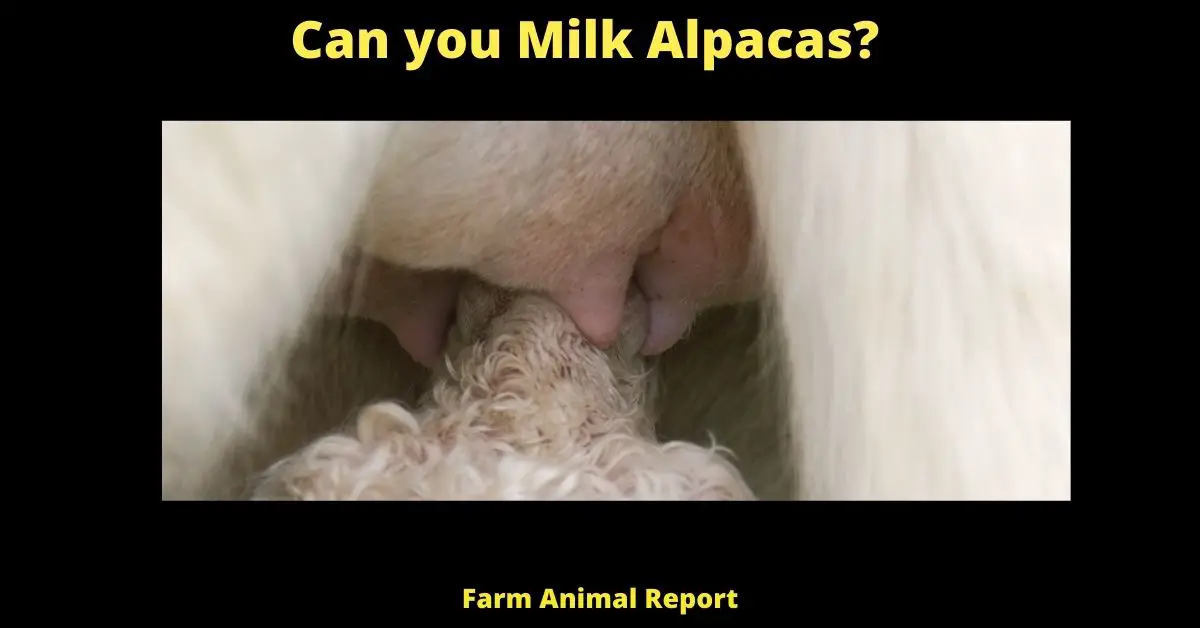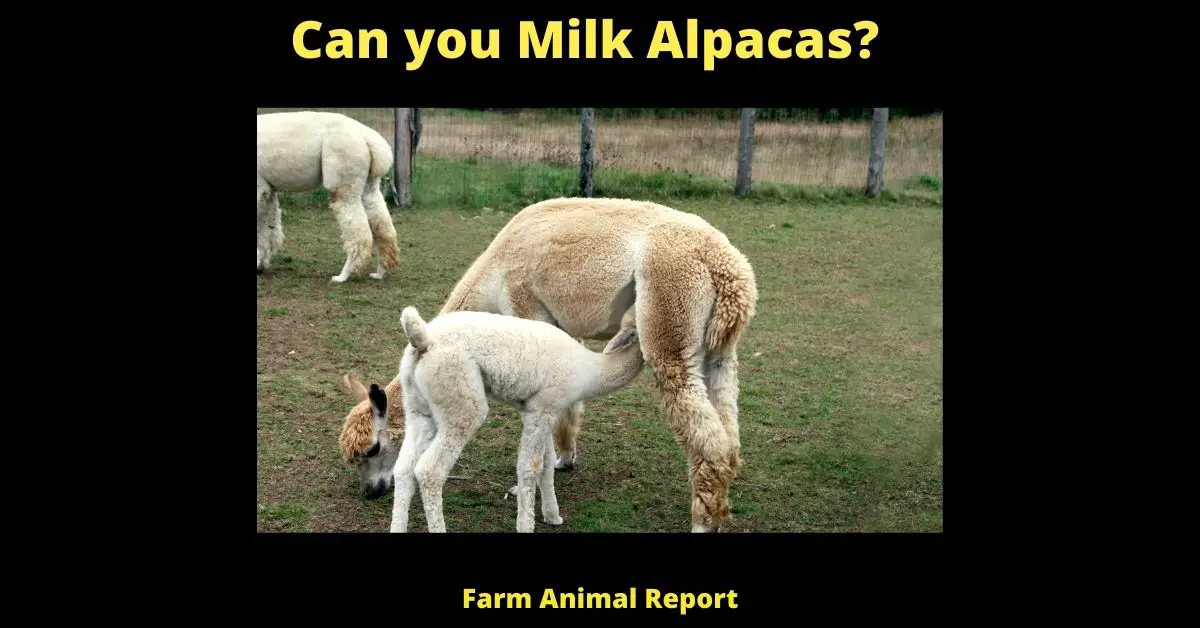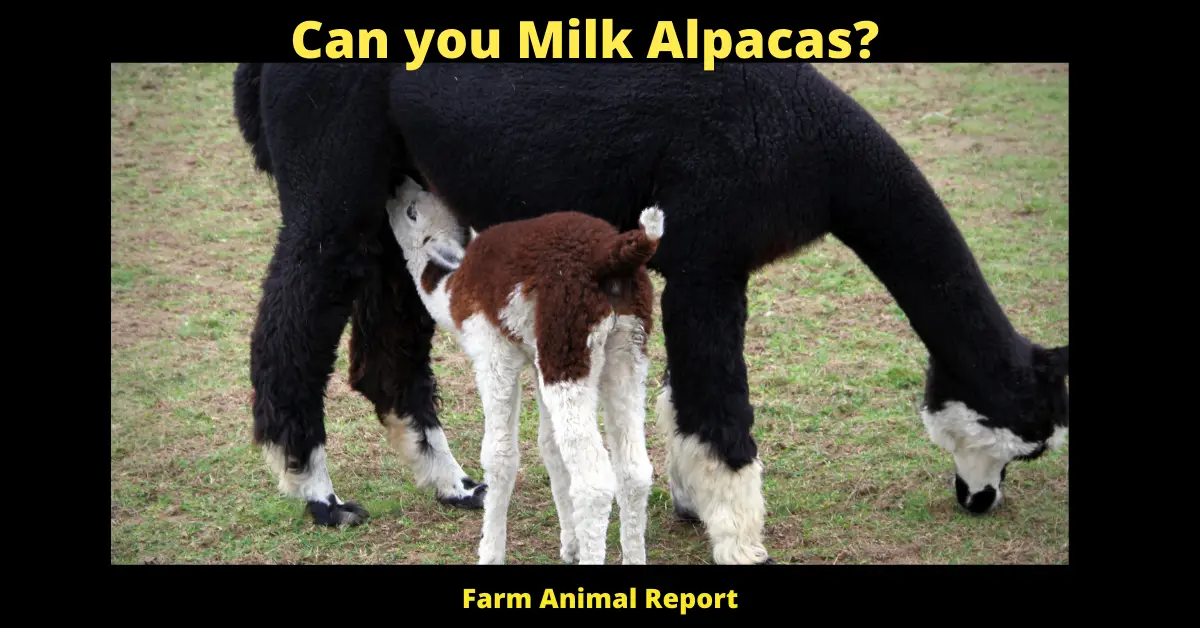Alpaca Milk – As a general rule, most Alpaca farmers in the United States do not commercially milk Alpacas. But That said you can Milk Alpacas for 1) Milk 2) Cheese 3) Feeding Baby Crias. It is challenging because of their small size but the rewards are great even though the amounts are small.
Alpaca Milk: Can you Milk Alpacas | Cria
Alpacas are great, gentle animals that can be milked just like a cow. When you have a whole herd of alpacas, it’s important to know how to get alpaca milk them so that they produce the most milk possible and give their full yield. In this blog post, we will go over all of the steps necessary for producing high-quality alpaca dairy products.
You can Milk Alpacas for
- Milk
- Cheese
- Feeding Crias
Alpaca Milk and Llama Milk is challenging because of the smaller amounts of milk acquired.
Check Out Amazon’s Educational Resources for Raising Alpacas
Alpacas are Mammals – Milk
Alpacas can be milked, just like any mammal. They are mammals, meaning they have mammary glands for producing milk to feed their young.
Can you milk Alpacas – If you see a female alpaca with what looks like bags of liquid hanging off of them, this is actually where the milk comes from! This area can be gently squeezed to encourage the flow of milk into your bucket or into your hand.
To milk an alpaca, you must first place a bucket under the end of her teat that is full of milk and then gently squeezes to encourage flow into the bucket. This should be done in a gentle rhythm for maximum yield from each animal! We will go over this process later in more detail when we discuss how to milk your alpacas.
Alpacas generally don’t need to be milked daily because they produce just enough milk to raise their cria (baby) and maintain good body condition.
The best time to milk alpacas is when they have a full udder. If you try milking an under-full or over-full udder, it will be uncomfortable for the alpaca and difficult for you because there won’t be enough teat to grasp firmly and adequate space in the bucket.
Milk an alpaca in the morning because it is a natural time for them to let down their milk.
Alpaca Milk is Rich in Protein and Fat – Llama
Many people are curious about the nutritional value of Alpaca dairy products because they don’t drink cow’s milk! The truth is that both types of these animals offer some very healthy options for consumers to enjoy. While cow’s milk has a high amount of protein and a low amount of fat, alpaca milk is the exact opposite.
Alpacas are able to produce very rich milk that has a high percentage of both proteins as well as fats! This means it’s perfect for cooking dairy products such as cheese or yogurt where you need those extra ingredients in order to make your final product delicious and healthy!

Alpaca Milk is Perfect for Cheese and Yogurt Making – Feed
Because alpacas produce such a rich dairy product that has high amounts of both proteins and fats, it’s perfect for making cheese or yogurt. Since these two products use the same ingredients but in different proportions to achieve their final form, we will go over how to make both of these dairy products in the next section.
Making Cheese from Alpaca Milk
In order to make cheese using alpaca milk, you will need a few specific tools that are not needed for making other types of cheeses. If you have never made cheese before and want to start with alpacas first, we recommend purchasing a cheese-making kit. This can be found at almost any large retailer and comes with all the supplies you need to get started! You will also want a few other tools such as:
A glass or non-reactive container (to hold your milk)
Cheesecloth for straining (and possibly butter muslin)
Your own rennet for making cheese
Alpaca milk can be used as a substitute in many types of cheeses, but we recommend going with one that has a shorter aging process. This is because alpaca milk does not have high amounts of proteins and fats like cow’s milk do.
Alpaca Milk is Drinkable For Humans
Is Alpaca Milk Safe for consumption?
Alpaca milk is similar to cow’s milk, but a little bit thicker and sweeter. It does not have the same creaminess as goat’s milk or soya milk though. Some people claim it tastes like coconut while others say it has a sweet flavor of fresh grasses with some sort of creamy undertone.
It is safe to drink, but it is not the best option. Alpaca milk contains lactose which makes it unsuitable for those who are lactose intolerant or have an allergy to dairy products.
It also lacks casein which makes it suitable for individuals with casein intolerance and is often used as a substitute by vegans due to its similarity in texture to dairy products.
Many people are not aware of alpaca milk because it has never been commercialized, but the high demand for natural and organic food is opening up new opportunities to sell this product.
Is Alpaca milk good
Alpaca milk is excellent for human consumption. It has many benefits for your health and can be considered to be one of the best milk substitutes you could possibly find on the market. The milk is very nutritious, containing a number of healthy fats, proteins, minerals, and sugars that are beneficial in different ways when consumed by humans
Where can I buy Alpaca milk?
Alpaca milk/cheese is available to buy directly from farms, at farmers’ markets, and at local stores. There are also unique places where you can go for Alpaca farm tours & tastings. Alpaca Cheese products are also available. Searching online may be your best option.
Alpaca and Llama Milk Product markets are much larger in south America. If you are looking for more of the Alpaca Cheese & other products, try some south American grocers.

Final Thoughts – Can You Milk an Alpaca?
In the United states Alpacas are used for Breeding, Pets, and wool. Alpaca Milk and Cheeses has not made it into commercial production. These Items may be tasted on some Alpaca farms. And they are more common in Peru and other countries that have large Alpaca Herds.
What does alpaca milk taste like Alpaca and llama cheese (Peru and Andean communities in South American)
Life on the harsh Altiplano would be a struggle without the alpacas and llamas that give their dung for fuel, hide for leather, wool for clothing, and milk for cheese.
Challenging though they may sound — they even give the occasional spit and they’re a little tricky to milk. Once extracted, though, their whole milk can be made into a long-lasting cheese that’s salty, rich, and heavy in texture.
This finds its way into markets and local food like empanadas, though most travelers come across it only when visiting locals.
Alpacas are popular domesticated animals in South America, often used for their wool. They are closely related to llamas, and like llamas, they can be milked.
The process of milking an alpaca is not significantly different from milking a cow. After the alpaca is brought into the milking area and secured, the farmer cleans its udders with a cloth or brush.
Then, the farmer attaches a milking machine to the udders and begins the process of drawing out the milk. Alpacas typically produce less milk than cows, but their milk is high in fat and protein, making it valuable for both drinking and cheese-making. As a result, milking alpacas can be a profitable endeavor for farmers who are able to properly care for these unique animals.





